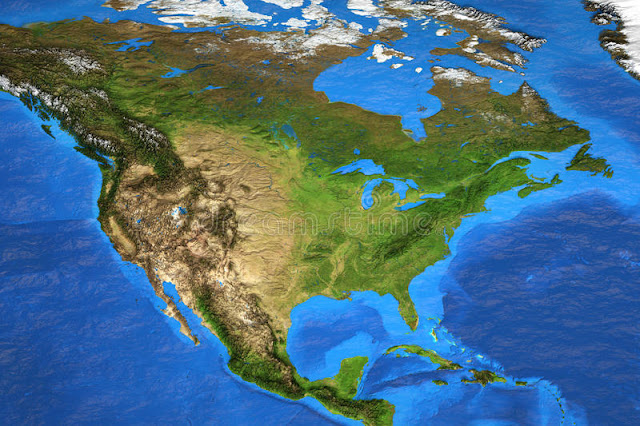April 11, 2023
The recent horrible weather events that have killed and injured hundreds of Americans and destroyed hundreds of homes and businesses have gotten well-deserved attention.
In addition to tornados like those seen this year in America, through its many decades the country has experienced many severe weather events, like hurricanes, floods, draughts, blizzards, ice storms, wildfires, bomb cyclones, the polar vortex and other weather horrors.
These weather phenomena were addressed last week by the Associated Press (AP) in a story by Seth Borenstein titled, “Why the US leads the world in weather catastrophes.”
Borenstein, noting that the “United States is Earth’s punching bag for nasty weather,” said that we can blame geography for the serious weather we experience.
“Two oceans, the Gulf of Mexico, the Rocky Mountains, jutting peninsulas like Florida, clashing storm fronts and the jet stream combine to naturally brew the nastiest of weather,” he wrote.
According to North Carolina state climatologist Kathie Dello, our weather problems start with “where we are on the globe. It’s truly a little bit … unlucky.”
Borenstein noted that when we add to that man-made aspects that complicate our locational problem -- like what, where and how we build things -- the situation gets worse. “The U.S. is by far the king of tornadoes and other severe storms,” he wrote.
Northern Illinois University meteorology professor Victor Gensini commented that “It really starts with two things. Number one is the Gulf of Mexico. And number two is elevated terrain to the west.”
Describing our recent outbreak of tornadoes, Borenstein warned that more could be coming. “Dry air from the West goes up over the Rockies and crashes into warm, moist air from the Gulf of Mexico, and it’s all brought together along a stormy jet stream.
“In the West, it’s a drumbeat of atmospheric rivers. In the Atlantic, it’s nor’easters in the winter, hurricanes in the summer and sometimes a weird combination of both, like Superstorm Sandy.”
The way forward to reduce the hazards of these storms is not to stop using incandescent light bulbs, gas stoves, gas-powered and diesel-powered vehicles and toilet paper, as championed by the Climate Change camp.
Susan Cutter, director of the Hazards Vulnerability and Resilience Institute at the University of South Carolina, told Borenstein, “One of the ways you can make your communities more resilient is to not develop them in the most hazard-prone way or in the most hazard-prone portion of the community.”
“The insistence on building up barrier islands and development on barrier islands, particularly on the East Coast and the Gulf Coast, knowing that that sand is going to move and having hurricanes hit with some frequency … seems like a colossal waste of money,” she said.
One factor is that in the south more manufactured housing is being used, and it is “more vulnerable to all sorts of weather hazards,” Cutter said.
Where we build and how we build contributes greatly to the deaths, injuries, and destruction resulting from the weather phenomena that our Earthly location brings to us. Given that we cannot control the weather that occurs naturally in the U.S., we should be even more aware of where and how we build structures.
If the United States as a whole has it bad, the South has it worse, according to Marshall Shepherd, a Georgia meteorology professor and former president of the American Meteorological Society.
“We drew the short straw (in the South) that we literally can experience every single type of extreme weather event,” Shepherd said. “There’s no other place in the United States that can say that.”
Some states, like Florida, North Carolina and Louisiana, stick out in the water, so they are more prone to being hit by hurricanes, some of the experts noted.
This AP story provides a factor affecting our severe and often deadly weather that many or most of us have not known of thought about previously. While those who argue against the catastrophic claims of climate change are generally ridiculed, this factor tends to lend them a significant element of defense.
And those dire warnings of catastrophe in the past decades that did not materialize seem even more crazy than before.
Comedian George Carlin many years ago pointed out that our planet has been here 4.5 billion years. Humans, by contrast, have only been around for maybe 200,000 years, a very small percentage of that time. And we have been involved in heavy industry and other things that so many believe may destroy Earth for only about 200 years. He said that “the planet has been through a lot worse than us.”
Of course, George Carlin is not a climate scientist, and how humans do things can have very negative consequences. But maybe things aren’t as bad as some think.
The natural factors that the AP story highlights must be a part of how we think about weather and climate change. And maybe we can moderate our attitude regarding doing away with fossil fuels by forcing the end of their use prematurely and unnaturally, given that our Earthly location is a primary factor in our weather.


No comments:
Post a Comment